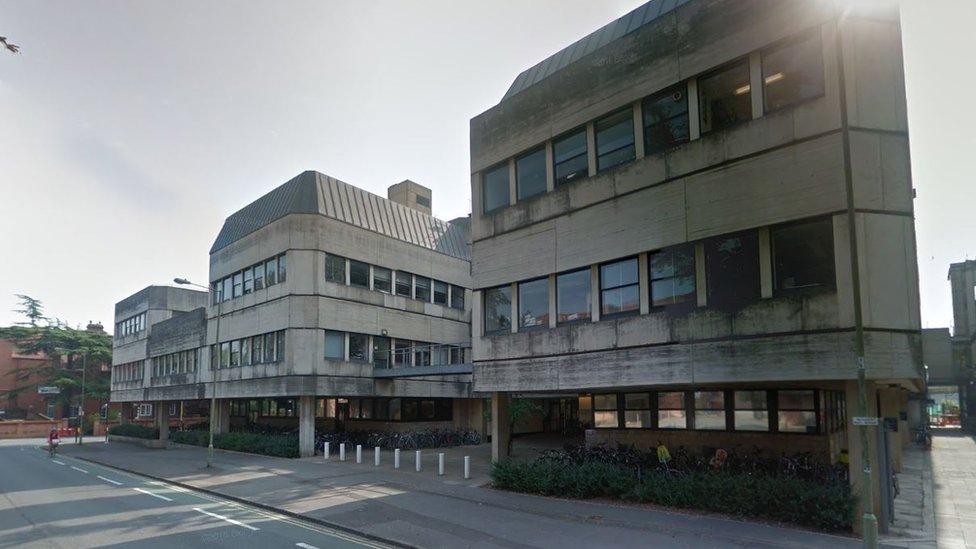Oxford University asbestos-affected building demolition begins
- Published

The Tinbergen Building was designed by the architect Sir Leslie Martin and completed in 1970
Demolition has begun on a University of Oxford building which had to be closed when asbestos was discovered.
More than 1,600 staff and students were forced to move out of the Tinbergen Building on South Parks Road following the discovery in 2017.
The university is planning its "largest ever building project" to construct a new life sciences centre on the site.
It said the new building would "significantly improve" teaching of the sciences at the university.
It will combine the university's zoology and plant sciences departments into a biology department and house experimental psychology, said the Local Democracy Reporting Service.
A letter from pro-vice chancellor Dr David Prout to Oxford City Council described it as the "largest building project the university has even undertaken".
Staff and students have been moved into temporary buildings to the south of the building and at the Radcliffe Observatory Quarter, but planning permission for those runs out in June 2022.
The Tinbergen Building was designed by the architect Sir Leslie Martin, who also designed the Royal Festival Hall at the South Bank Centre in London.
It was completed in 1970 and named after Dutch biologist Niko Tinbergen, who taught at Oxford from the late 1940s.
He was co-awarded the Nobel Prize for physiology and medicine in 1973, and died in the city in 1988.
Demolition is expected to be completed on the building later in the year.
- Published19 July 2017

- Published10 February 2017
